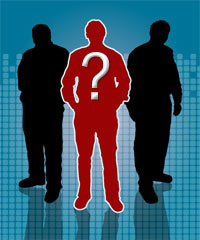|
WHO IS RESPONSIBLE FOR HELICOPTER ACCIDENTS?
 Regardless of the cause of the accident, helicopter accidents and
helicopter crashes do not occur unless something goes terribly
wrong, and this inevitably means that someone did something they
should not have done or they failed to do something they should have
done. Regardless of the cause of the accident, helicopter accidents and
helicopter crashes do not occur unless something goes terribly
wrong, and this inevitably means that someone did something they
should not have done or they failed to do something they should have
done. In deciding who ultimately is at fault, one should not, and
must not, rush to judgment. Even what appears to be the most obvious
cause of a particular helicopter accident could have other causes
and multiple underlying causes. It is a mistake to begin the legal
process without a thorough investigation. Rushing into litigation
can mean disaster for the lawsuit because it could mean that an
important fact or potential defendant is omitted. This could cause a
legal disaster on top of an aviation disaster. In this regard, the
value of skilled, experienced counsel cannot be overlooked. He or
she will know what will be needed in terms of legal and technical
expertise to provide the best possible representation. Proper,
thorough investigation, coupled with legal analysis, will find those
who are at fault, factually and legally, for a particular accident.
Each analysis will depend on the facts of a particular helicopter
accident. Generally speaking, experience shows that the following
entities are potential defendants: 1. Operator—Company or
individual pilot.
2. Designer—Aircraft or component
3. Manufacturer—Aircraft or component
4. Seller—Aircraft or component
5. Flight School/Flight Instructor
6. Owner
7. Lessor/lessee
8. Overhauler
9. Maintainer
10. Air Traffic Control—U.S. Government or contractor
11. Control Tower Operator—U.S. Government, contractor, or private
12. Flight Chart/Approach Procedure Publisher
13. Operational or Maintenance Manual Publisher
14. Airfield/Helicopter Pad Owner/Operator
15. Obstruction (television, radio, cell phone tower, vegetation,
building) owner or lessor
16. Weather provider This list is not exhaustive, and there could
be others given the specific facts of a particular helicopter
accident. It is also common to find that there is more than one
entity who is at fault. This could mean that legal action would have
to be commenced in more than one court, but it is better for all if
all actions are brought in one court. >>
Next Page |